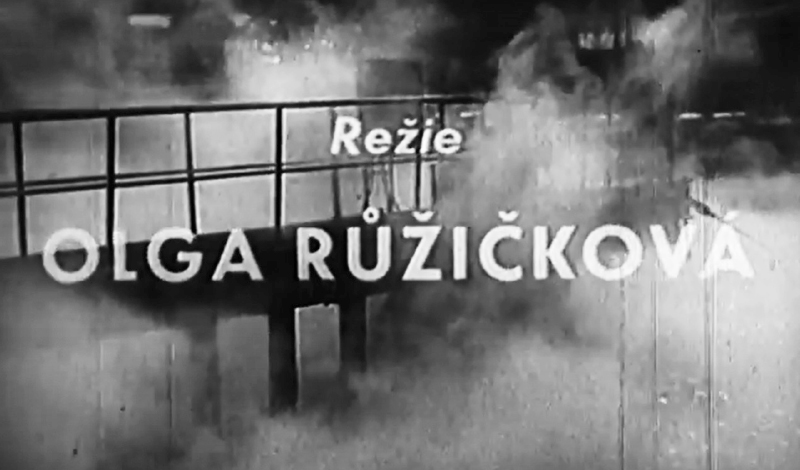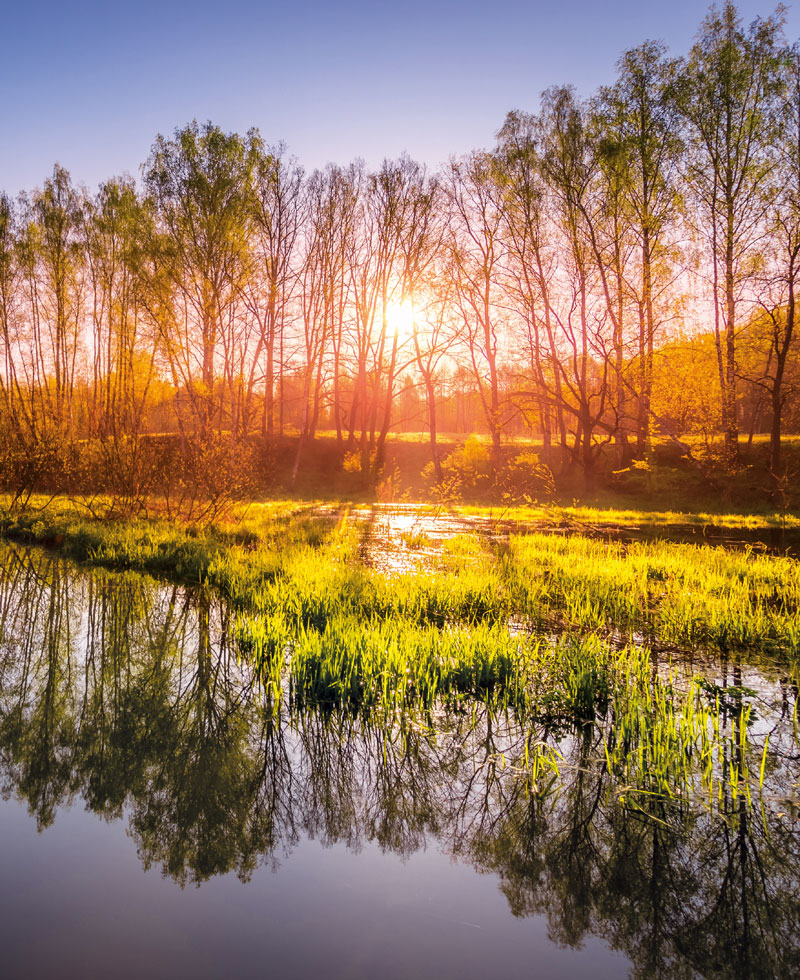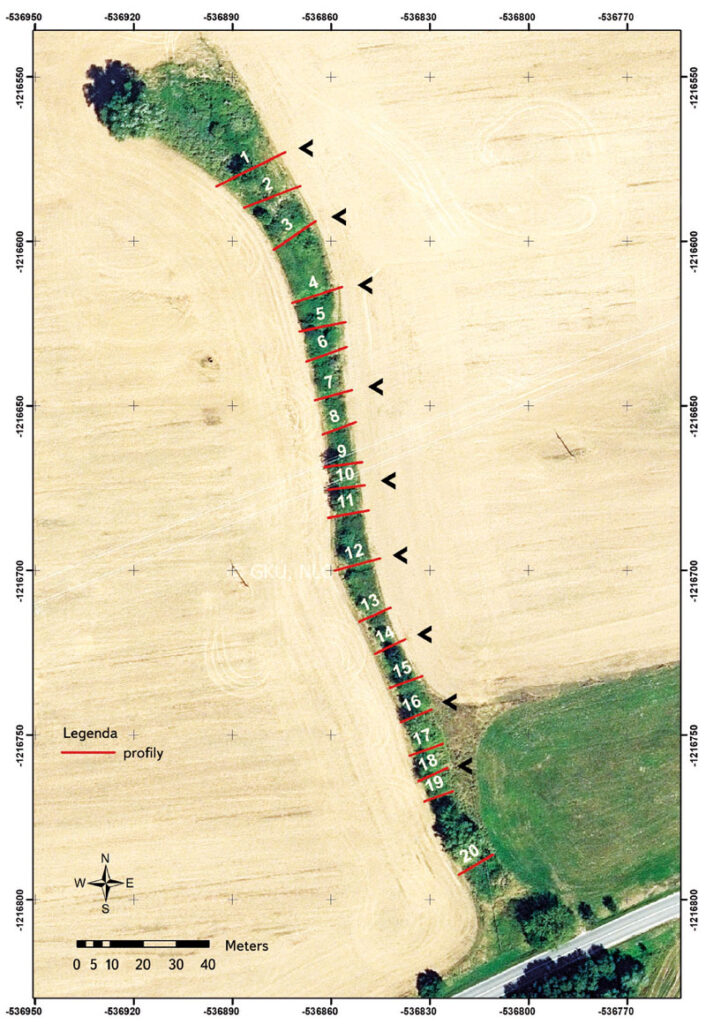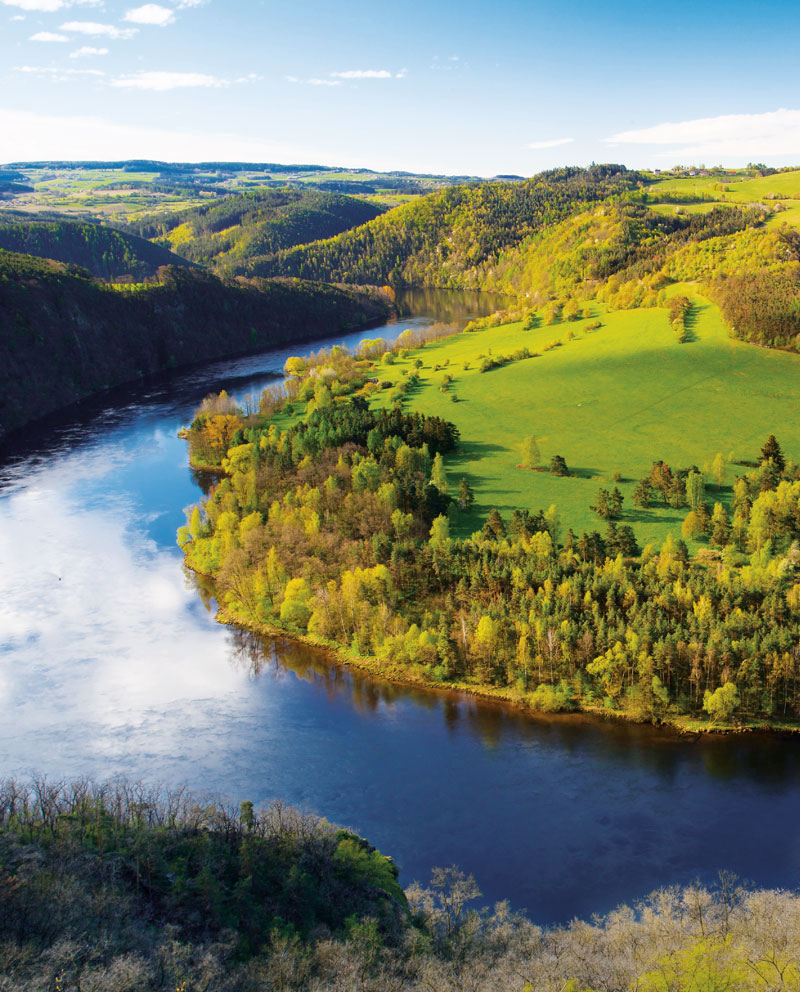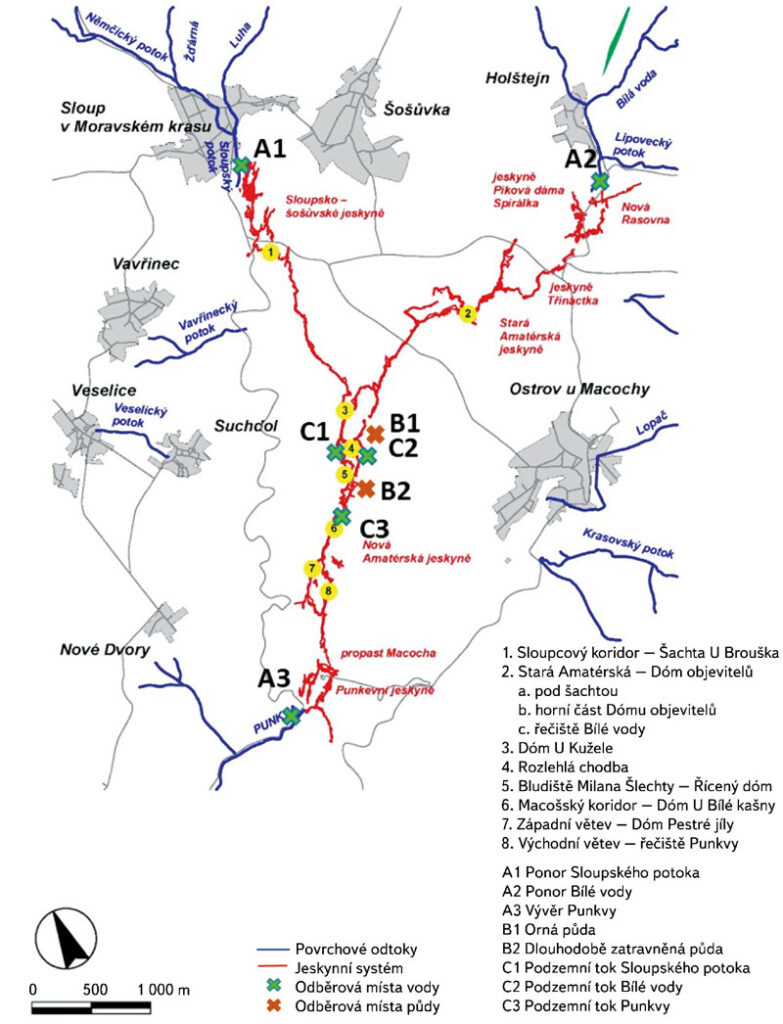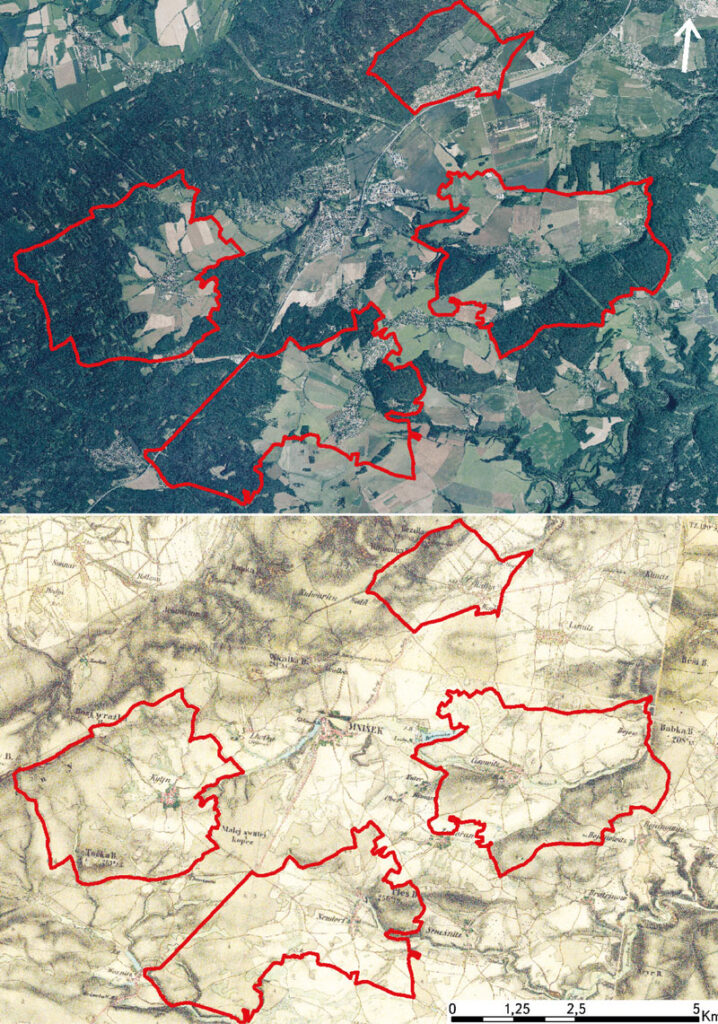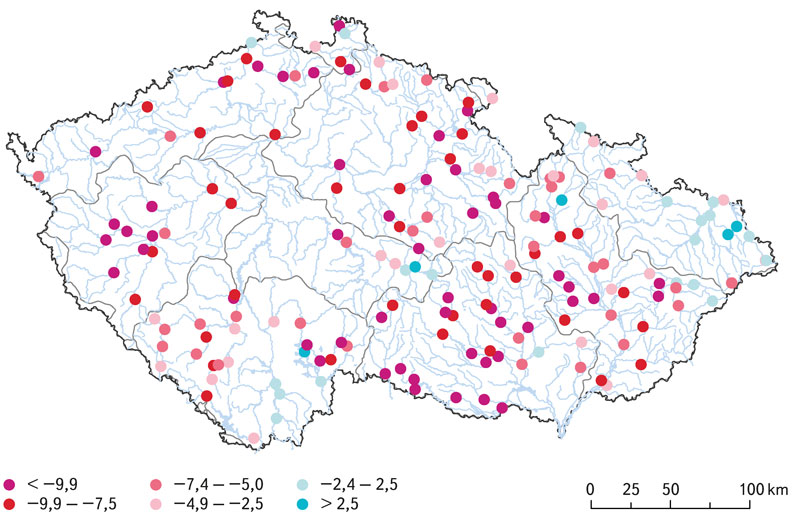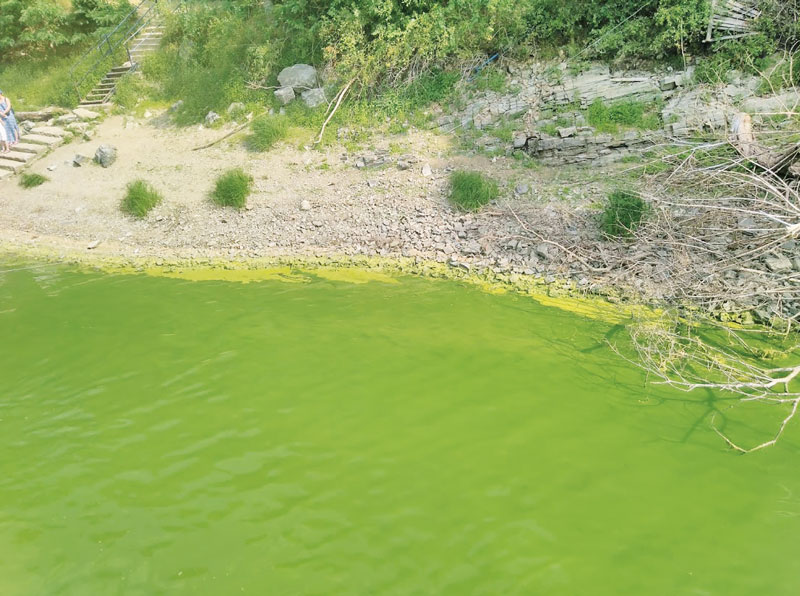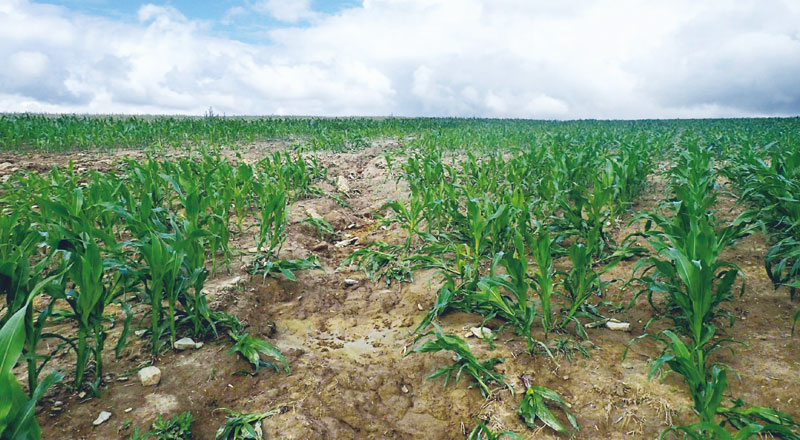The Moravian Karst is the largest and most karstic area in the Czech Republic, and, as such, it is a protected landscape area (PLA). The karst area occupies a strip of Devonian limestone north of Brno. The north part of Moravian Karst is drained by the river Punkva and its headwaters. One of the biggest cave systems in central Europe is located there, Amaterska cave, which is more than 40 km long.
Despite the strict protection measures that are in place in the PLA, the presence of pollutants and potentially hazardous substances has recently been detected in the Punkva river and its catchment. The sources of this pollution are found both within the territory of Moravian Karst PLA and in the river´s catchment, and they are related to anthropogenic activities and land use. This article focuses on the occurrence of pesticides, especially triazine and azole pesticides and their polar metabolites. In 2020, a new significant contaminant, 1,2,4-triazole, a common relevant metabolite of azole pesticides, was found at the site concerned. These substances can have fatal effects not only on the endemic organisms living in the Moravian Karst, but they can also endanger human health because the local groundwater is used as a source of drinking water. Thanks to the studies carried out, the protection zones around the cave system have been extended, reducing the negative effects of agricultural activities in the area of interest.
